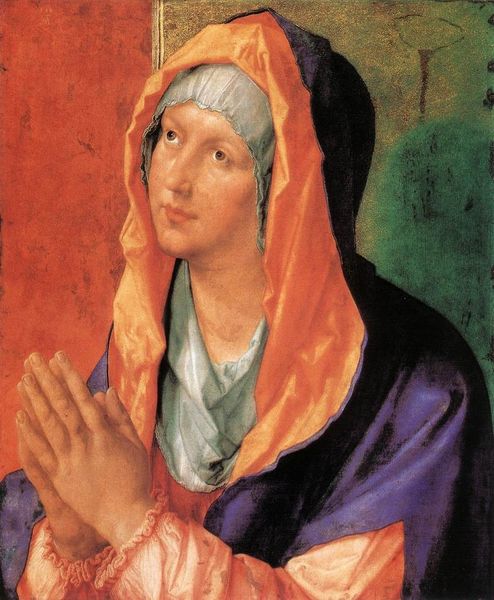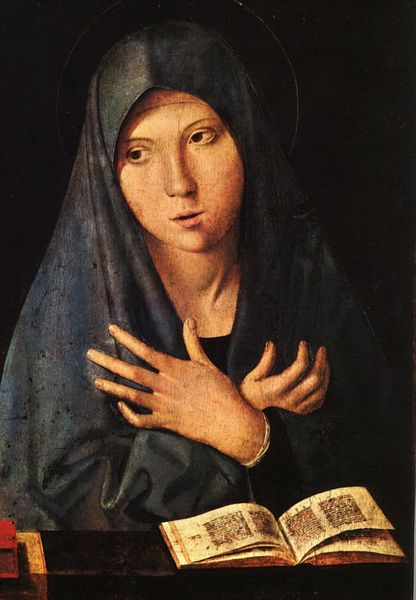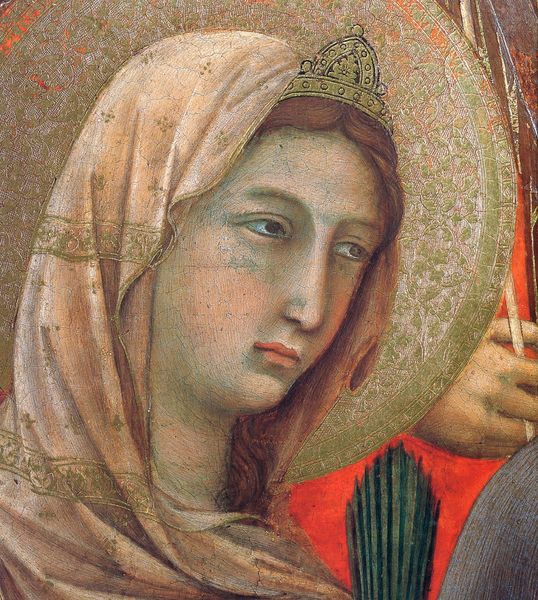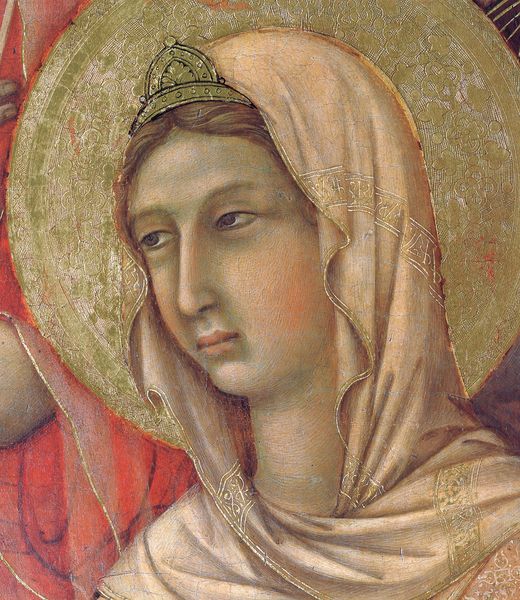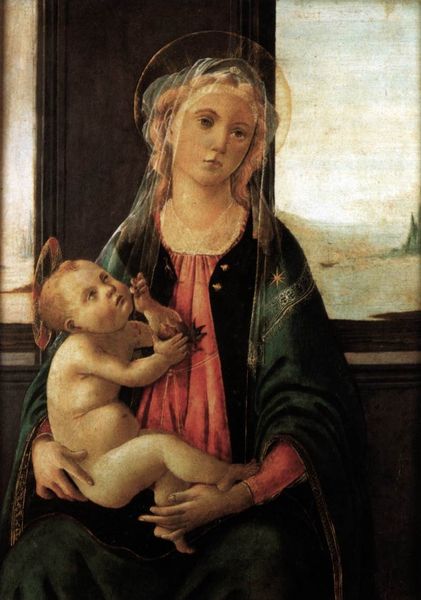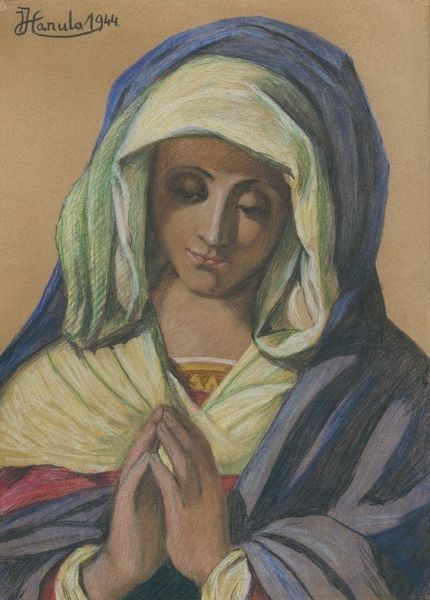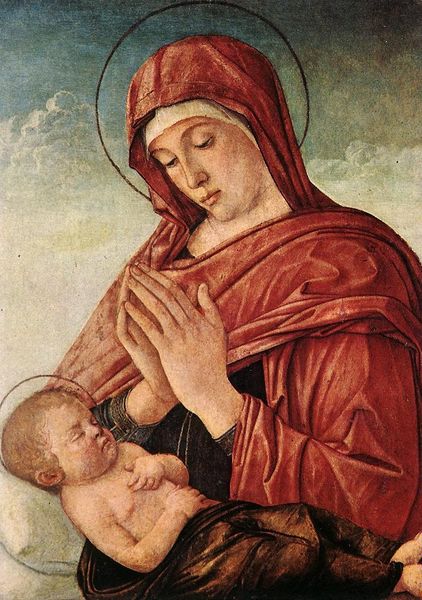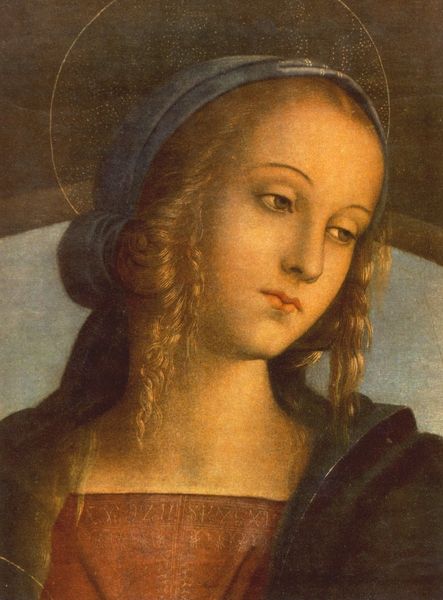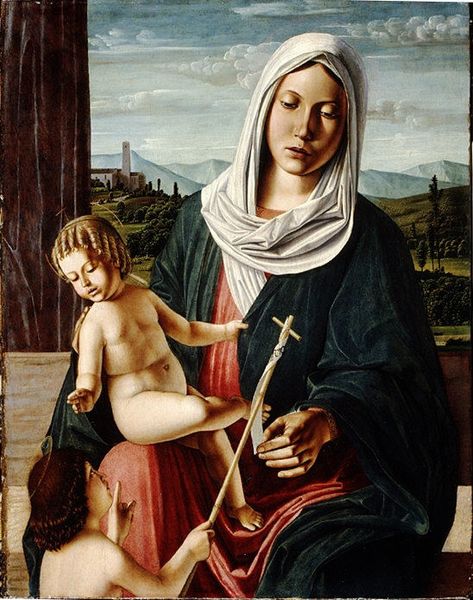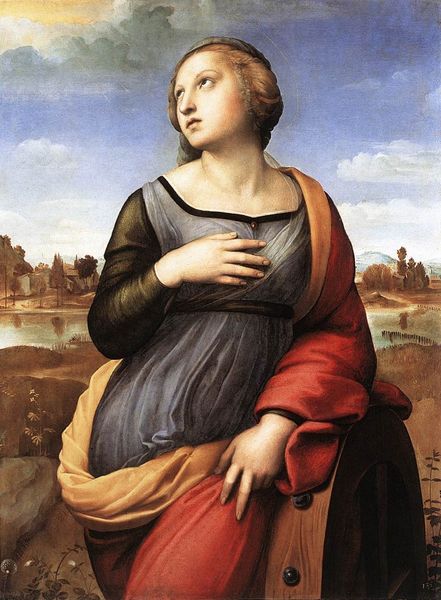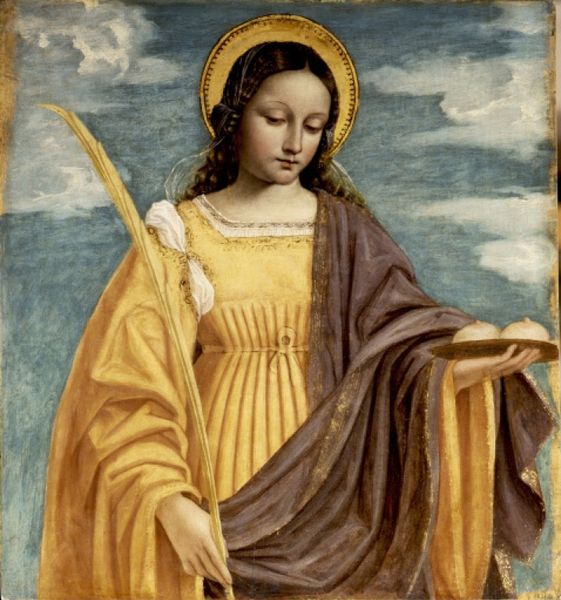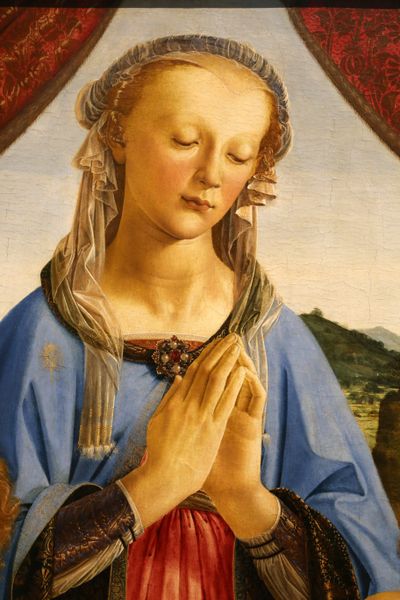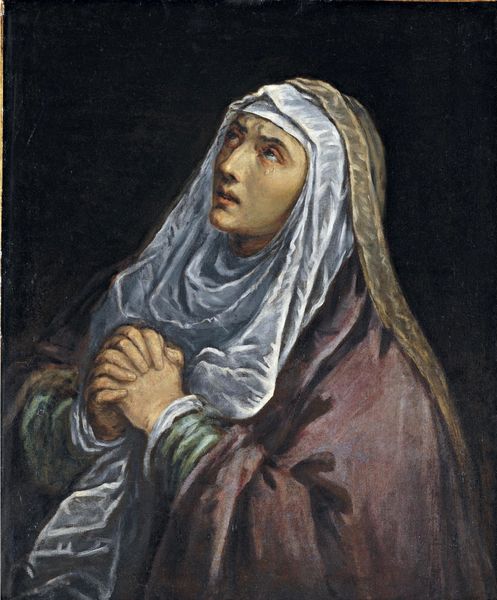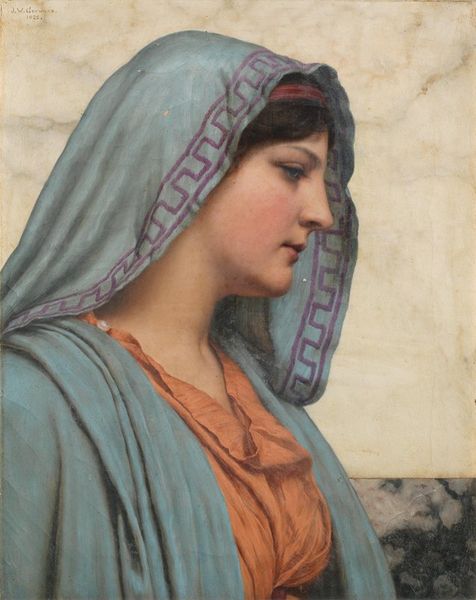
The Pazzi Crucifixion (detail 1) 1496
0:00
0:00
pietroperugino
Santa Maria Maddalena dei Pazzi, Florence, Italy
tempera, painting
#
portrait
#
tempera
#
painting
#
oil painting
#
crucifixion
#
history-painting
#
italian-renaissance
#
portrait art
#
christ
Copyright: Public domain
Curator: This detail is taken from Pietro Perugino's “The Pazzi Crucifixion,” painted in 1496. The full fresco can be found in Santa Maria Maddalena dei Pazzi, here in Florence. Editor: The initial impression is one of serene solemnity, a carefully rendered emotional landscape. The lines of the draped figure draw my eyes and seem to frame her calm expression in an ethereal way. I see the tempera, that humble, accessible material, rendered to create such an opulent and enduring religious scene. Curator: Indeed. Commissioned during a period of political instability in Florence, it's remarkable how Perugino uses classical composition to project order and harmony onto the scene. Notice how the landscape behind the figures contributes to that placid mood. Editor: It's fascinating to consider the socio-political factors that contributed to this piece. I'm interested in exploring who was meant to view it and what this means to a collective Florentine memory. Given its location, in a religious setting, do we know the status of viewers over time and how such status impacted reception? Curator: Exactly! Think of the patronage—likely from wealthy families seeking social and perhaps even divine capital. Then, think about the labor—the apprentices grinding pigments, preparing plaster… It makes us reconsider the traditional idea of the lone genius artist and emphasizes how the artistic landscape here relied on collaborative practice. Editor: It becomes less about pure artistry and more about collective social aspiration through the lens of art, right? Curator: Precisely. The Pazzi Crucifixion represents a complex intersection of piety, political ambition, material resources, and collaborative processes. It's a snapshot of a society grappling with its identity at a pivotal moment. Editor: Seeing this small fragment reminds me of how artworks become enduring narratives, shaped and reshaped by our engagement with the conditions and people that made them. Curator: And that, to me, is a critical understanding of the processes that can help illuminate and interrogate institutional history.
Comments
No comments
Be the first to comment and join the conversation on the ultimate creative platform.
